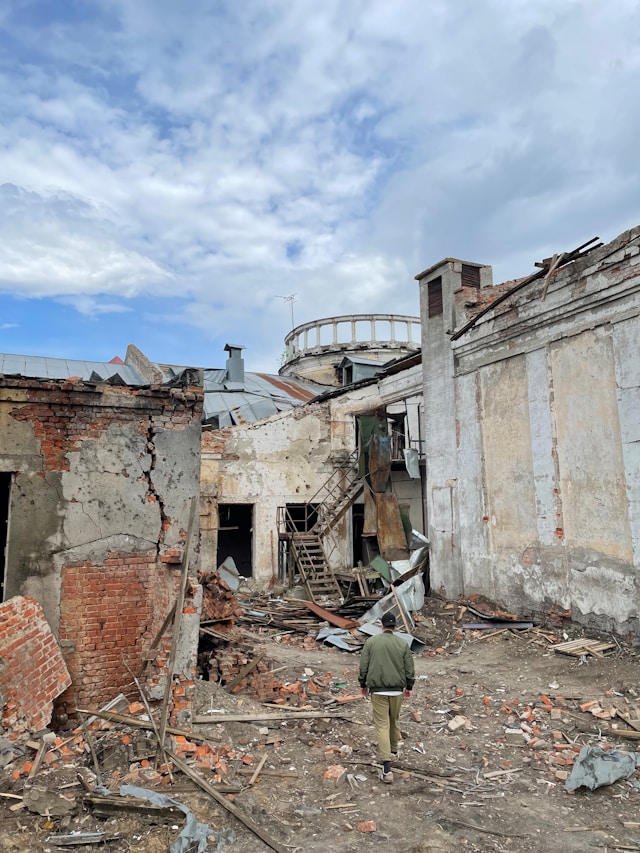
Viktoriia Lapa
Senior Legal Fellow
The destruction of educational institutions in armed conflicts is a widespread practice. Following almost ten years of armed conflict in Yemen, heavy damage to their schools forced some students to create improvised classrooms in the middle of the road. This striking scene summarises the harsh reality of an entire generation of Yemeni children struggling to access education.  
Michel Anglade, Director of Save the Children and representative of the Global Coalition to Protect Education from Attack (GCPEA), asserted that ‚Äėaccording to the GCPEA, in 2022, there were more than 3,000 attacks on educational institutions, a 17% increase compared to the previous year.‚Äô He explained that some schools are used for military purposes, and the GCPEA coalition found that the use of schools by militaries increased in 2022, with over 500 reported cases.¬†
This is particularly relevant in relation to the ongoing Russian invasion of Ukraine. A recent report by Human Rights Watch, titled ‚ÄėTanks on the Playground‚Äô details:
The extensive damage inflicted on schools and kindergartens in four Ukrainian regions during the early months of the ongoing invasion by Russia.
The report highlights that most of the damage resulted from aerial attacks, artillery shelling, rocket strikes, and, in some instances, cluster munitions, leading to significant structural damage and debris in the classrooms. Russian forces have also been reported to loot and pillage occupied schools, an act considered a war crime.  
Yet, in international law, there is no explicit provision that solely addresses this issue. Schools are generally considered civilian objects and thus fall under the broader principles of International Humanitarian Law (IHL). According to the IHL principle of distinction, parties to a conflict must differentiate between civilian objects and military objects, ensuring that attacks are directed only at the latter.   
This principle is a rule of customary international law that applies to both international and non-international armed conflicts. Consequently, targeting civilian objects, including schools, is prohibited. However, if a school is used for military purposes, it will lose its general protection and become a military object. In that case, a direct attack on the school does not constitute a breach of IHL. 
In response to the gaps in international law, the Safe Schools Declaration was launched in Oslo in May 2015. This initiative emphasises the significant impact of armed conflicts on education and sets forth commitments to bolster the protection of educational institutions and ensure the continuity of education during conflicts. A key component of the Declaration is the implementation of the Guidelines for Protecting Schools and Universities from Military Use during Armed Conflict (Guidelines), which were developed between 2012 and 2014.  
These Guidelines offer practical actions that conflict parties can adopt to minimise the military use of educational facilities and mitigate the adverse effects on students’ safety and learning. The Global Coalition to Protect Education from Attack (GCPEA), a project of the Tides Center, oversees the implementation of these Guidelines. While Ukraine signed the Safe Schools Declaration in 2019, the Russian Federation has yet to. Even though state endorsement is not legally binding, it often leads to states taking vital concrete steps to protect schools.¬†
Following Russian intervention in the Donetsk and Luhansk regions in 2014 and its subsequent full-scale aggression in 2024, schools, universities, and kindergartens have been under constant attack. Some schools had to adapt to constant bombardments and were assembled underground, like the underground school in the city of Kharkiv.  
In his recent interview in February 2024, the Vice Minister of Education of Ukraine mentioned that ‚Äė[o]ne in seven schools in Ukraine is currently damaged as a result of the full-scale invasion. More than 3.5 thousand educational institutions have suffered some kind of damage, almost 400 have been completely destroyed.‚Äô ¬†

Russian bombardment of schools is not confined to one or two incidents. Attacks like the one in Mariupol in March 2022 where Russian forces attacked an art school sheltering around 400 people or in March 2024, when Russian forces dropped two bombs on a school in Sumy Oblast seem to be a regular occurrence. The Ministry of Education of Ukraine has a dedicated webpage, SaveschoolsInUa, where it monitors all damaged and destroyed educational institutions in Ukraine. As of the 25th of July 2024, 3,798 educational institutions were affected by bombing and shelling, of which 365 were completely destroyed.  
Since some of these areas are still under a constant threat of bombardments, one Ukrainian NGO, SavED, headed by the former Minister of Education of Ukraine, Anna Novosad, builds shelters and creates learning centers. The main idea behind the creation of SavED is the belief that education is a fundamental right that should be accessible to all. 
Another recent episode involved an attack on a sports school in Dnipro on the 2nd of April 2024. This school serves as a regional institution, with many students residing on campus due to their remote places of residence. In an interview on the 19th of April 2024, schoolteacher Yelyzaveta Voloshyna reiterated that the school was not used for any military purposes. In fact, there were some children there since they train in the evening. If it were not for a prompt evacuation of the school when, on the evening of the 2nd October, the bombers were sighted and the air raid siren sounded, it may not have been only the school, but also its students, which was lost. 
Unfortunately, the Russian invasion is still ongoing, and for many children in Ukraine, the new academic year in September 2024 could not start because their schools have been destroyed by Russian missiles. It goes without saying that it’s the primary responsibility of both parties to the armed conflict to ensure compliance with the Safe Schools Declaration. What is more, it is the responsibility of the broader international community to ensure that all sanctions imposed on Russian Federation are complied with by all addressees, increasing the cost of waging this aggressive war for Russia.  









